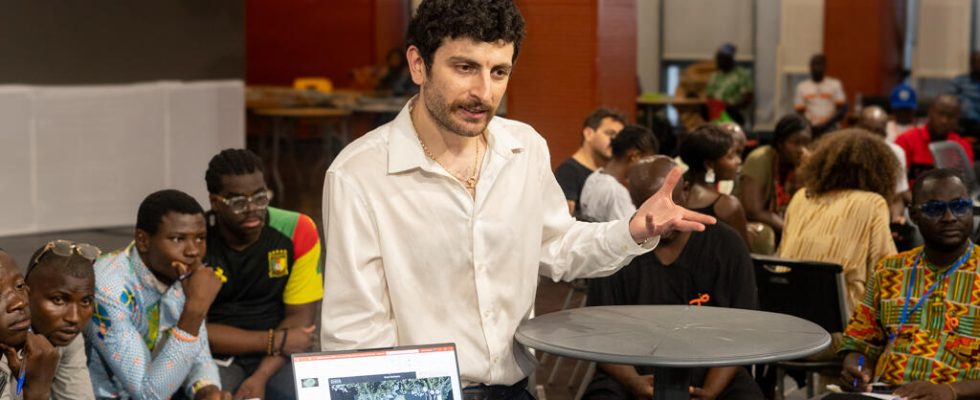Abidjan hosts the 5th Africa-Europe regional forum of the French Institute, “Our Future”, from April 20 to 22. The challenge of this edition, which is held between several places in Abidjan, is to highlight the issues of valorization of heritage and memories under the prism of Cultural and Creative Industries (ICC). Among the avenues proposed by the speakers: the digitization of threatened architectural heritage.
3 mins
With our correspondent in Abidjan, Marine Jeannin
Erosion and rising water levels, climate change, armed conflicts… The threats weighing on African architectural heritage are numerous. To remedy this, the start-up Iconem, which benefits from institutional funding (Unescoembassies and French institute, British Council), carries out digitization missions of endangered architectural heritage.
The technology used, explains the Franco-Lebanese Bachaar Tarabay, responsible for scientific projects at Iconem, is called photogrammetry. “ It is a technology which consists of taking thousands of photos according to a precise frame and parameters to reconstruct an identical digital twin of a site. We use drones, cameras… And what we do in training missions is that we buy the same equipment for the actors we are going to train so that they can scan the rest of the information themselves. their heritage in their country. »
Read alsoIconem: “Creating a memory of humanity” for endangered heritage
The Togolese Nicolas-Etienne Sohou N’gani came to attend the round table. Expert consultant in culture, tourism and development, teaching on issues of audiovisual heritage management at Senghor University in Alexandria (Egypt), he directs a project with the same objective, but has opted for another digitization technique: immersive 360-degree video.
And to return the natural and architectural treasures of theTogo accessible to its population, its pilot project offers traveling virtual exhibitions. “ Most of the population lives in rural areas and does not necessarily have access to museums. For us, the objective is to bring this heritage back to these populations with virtual reality headsets, hence the organization of traveling exhibitions. For example, we have held exhibitions in markets, where our mothers do not necessarily have the time to travel to visit places. We brought these sites to these people “, he explains.
“ In front of her display, she wears a helmet, she changes locations virtually, she goes to visit a site that is hundreds of kilometers from her market, explains Nicolas-Etienne Sohou N’gani. Like the Tata Tamberma, the only site in Togo included on the UNESCO world heritage list, the Lomé palace which was restored as a cultural place after being occupied by the German governor and the French governor, the House of Slaves …There is one who testified saying that it is interesting, because it allows them to know what to answer to their children when they ask them questions about the local culture », he adds.
Nicolas-Etienne Sohou N’gani has also undertaken to digitize Togolese intangible heritage, such as traditional dances and tales, in order to preserve it, too, for future generations.
